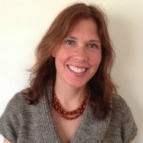On a recent evening, Melissa Sanderson, chief operating officer of the Cape Cod Commercial Fishermen’s Alliance, spent an extra four or five hours at the office measuring, weighing and processing sea scallops. This once-a-week endeavor is part of a larger program set up by the federal government and funded by commercial fishermen.
The work of Sanderson, local fishermen and Coonamessett Farm Foundation in Falmouth is designed to track if major oceanic shifts, including increases in water temperature and acidity, are affecting how scallops reproduce. It’s a meaty question; scallops were valued at $514 million last year, 64 percent of the state’s total fisheries landings.

“I think this kind of research is great and long overdue,” said Captain Bob Keese, who had delivered the scallops to Sanderson.
Keese, who has scalloped for decades, has noticed changes. In the past, scallops in deeper waters (about 70 fathoms) didn’t grow well. Now, they are big and marketable. Keese thinks it has to do with how climate change, a shifting Gulf Stream and more wind, is bringing warmer water and more food to greater depths.
“There is definitely something going on,” he said.
If water temperature changes enough, scallops in northern waters might behave similar to ones in the south, where they reproduce in the late spring or early summer as opposed to when they reproduce now: in the late summer or early fall. Scallops in New England also might start to spawn twice a year, similar to those in the Mid-Atlantic.
“This work is important to continue the sustainable harvest of sea scallops from our changing environment,” Sanderson said.
Doreen Leggett is Community Journalist and Communications Officer for the Cape Cod Commercial Fishermen’s Alliance.


























